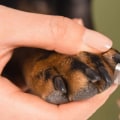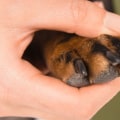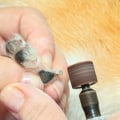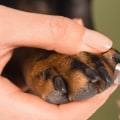Nail clippers are hand tools and do not require batteries or electricity to operate. Scissor-type nail clippers may be more efficient for trimming dense, strong nails. As with the guillotine tool, its use requires a firm hand. You have to be careful how fast the nail (the section near the top where the blood vessels are located), because if you cut it, your dog may associate cutting his nails with pain.
Using a small scissor instead of a large one can give you optimal control. Make sure they are sharp, not blunt. You can do this, especially if your dog is very calm and doesn't mind the manual movements of filing from one side to the other and the time it takes to file his nails “perfectly”. Use an electric nail grinder on your dog if his nails are too big, dark-colored nails, or nails with rough edges.
Be careful because a dog's nails can get caught in these types of nail clippers and, if they come off, they can be damaged or their nail torn off. In some cases, you might want to consider using both. Even if you decide to use a dog nail clipper to cut your dog's nails, you can use a grinder to create a smoother finish. Compared to the similarly priced Furminator nail clipper, the Millers Forge pet nail clipper is more comfortable to hold, quieter to use and easier to maneuver around each nail thanks to the size and thickness of the blades.
Using a nail grinder if your pet tolerates sound and touch is a method that makes it virtually impossible to accidentally cut your dog. For shy dogs or those who are reluctant to have their nails cut, a silent nail clipper is an advantage. A bath for a dog that despises water or a toothbrushing session for the dog that tries to bite the toothbrush are two steps that cause apprehension for a handsome puppy, but for some reason, cutting his nails is the number one activity that causes the owner and the dog to tremble with dread. Dogs that have light-colored nails are easier to cut with a handheld nail clipper because you can see it quickly.
You just have to go slowly, clench a little, look at your nail from the front, grind a little more, look at it again and stop when you see it. Cassie Edmond, an animal care specialist at the San Diego Humane Society, likes to use small nail clippers for puppies or dogs whose nails have gotten too long and are curling towards the foot pad, since smaller blades are easier to maneuver with curly nails. Its motor does not produce an unpleasant high-pitched buzz in the recommended configuration and, in addition, it is quieter than the Casfuy dog nail grinder. If you're just starting to cut your dog's nails, a basic, inexpensive nail clipper is a good option.
Large, heavy dogs that run outside can naturally wear out their nails, so they need to be trimmed less frequently. However, at the end of the day, choosing the right dog nail clipper depends on how you like to use it.






